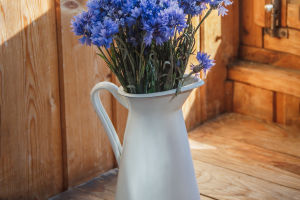The Peony, an enchanting and enigmatic flower, often takes center stage in gardens.
Its graceful appearance, vibrant colors, and profound cultural significance elevate it to the queen of flowers in the hearts of many.
This article will delve into the origin and varieties of peonies, their cultural symbolism, and their applications in gardens, inviting you to immerse yourself in the captivating beauty of this flower.
1. Origin and Varieties
Peony, scientifically known as Paeonia lactiflora, belongs to the Paeony genus of the Ranunculaceae family. Originating in China, records of peonies date back over 2,000 years in the "Book of Songs."
Legend has it that Bian Que, a renowned medical scientist during the Warring States Period, cultivated peonies. Known as the "King of Herbs," Bian Que discovered the medicinal properties of peonies and cultivated them, transforming them into a flower valued for its medicinal and ornamental qualities.
Numerous peony varieties have emerged over time through selective breeding and propagation. Peonies can be categorized into various types based on flower shapes, such as "peony-type," "butterfly-type," "cup-type," and "snapdragon-type."
Each type showcases unique flower appearances and colors. For instance, "peony-type" peonies boast full, plump blooms reminiscent of peonies, while "butterfly-type" peonies feature slender petals resembling a butterfly's wings, exuding elegance.
Meanwhile, "cup-type" peonies exhibit smaller flowers with overlapping petals forming a cup shape, offering a distinctive allure. Additionally, there are double-flowered and multi-petaled varieties, enriching the visual palette for enthusiasts.
2. Cultural Symbolism
Peonies hold profound symbolic significance in Chinese culture, often representing auspicious and desirable attributes. Historically, peonies symbolized nobility and grace, frequently used to praise the beauty of women.
For example, verses like "peony fans the hem of their robes, lamenting the insufficient spring joy" abound. Moreover, owing to their lush petals and delicate appearance, peonies are metaphorically associated with wealth and prosperity, as seen in expressions like "peony blooms herald wealth and glory."
Furthermore, peonies are invoked to express aspirations for a better life, epitomized in phrases like "peony brings joy to hearts, its bloom heralding wealth and glory."
Beyond Chinese culture, peonies hold unique symbolism in Western lore. In Greek mythology, peonies are deemed the protective flower, symbolizing courage and strength.
Conversely, Roman mythology regards peonies as the incarnation of Venus, the goddess of love, embodying notions of love and beauty. Thus, whether in the East or the West, peonies are imbued with auspicious and beautiful connotations, elevating them to revered status in the collective consciousness.
3. Garden Applications
Owing to their captivating beauty and rich cultural heritage, peonies find widespread use as ornamental plants in gardens, adding splendor to the landscape.
Peonies adorned pavilions and palace courtyards in ancient Chinese royal gardens, becoming indispensable elements of regal landscapes.
In contemporary urban gardens, peonies continue to captivate, gracing parks, courtyards, and flower beds with their allure, drawing the gaze of passersby.
Moreover, peonies are famous for cultivating bonsai, becoming prized home garden additions. Through bonsai techniques, enthusiasts can cultivate peonies within confined spaces, savoring their exquisite blooms and vibrant hues, thereby experiencing the marvels of nature firsthand.
In conclusion, with their storied history and rich cultural connotations, peonies not only embellish gardens but also symbolize auspiciousness and beauty in culture.
Their resplendent blooms and profound cultural legacy cement their status as the reigning monarchs of flowers, forever radiating fragrant allure and captivating the world's attention.


